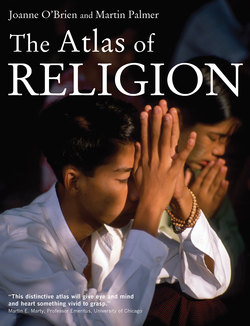Читать книгу The Atlas of Religion - Joanne O'Brien - Страница 21
На сайте Литреса книга снята с продажи.
ОглавлениеPart Two
BELIEFS
The vast majority of people follow one or other of the major world religions. While there is a small, but growing number of non-believers, the number of atheists has shrunk recently due to the fall of communism. Adherence to one religion is not the only way that people express religious commitment. China, for example, has a complex mixture of religious traditions, ranging from Shamanism, through Daoism to Buddhism and Christianity. In practice, most Chinese make use of different aspects of each tradition for different needs. For example, they might use Shamanism or Daoism for exorcisms, Daoism for charms and magic, Buddhism for death ceremonies, and Christianity for success in business deals. Combining these into a workable mix is not considered a problem by most Chinese, whereas the Western and Islamic world view asks for adherence to just one tradition. For many who have grown up within a specific religion, the pluralism of today offers additional elements of spirituality and religious practice that people are beginning to use increasingly, while still remaining within the fold of one particular tradition. Many devout Catholics, for example, will practise yoga, while devout Buddhists will also offer prayers to the Virgin Mary in times of special need. This wider framework of religious reference is also underpinning the growth in new religious movements and the surprising growth of indigenous traditions, such as Native American and traditional African religions, which have spread to many other parts of the world. In looking at the figures for religious belief, it is useful to remember that outward adherence often covers a vast array of different beliefs, rooted in one tradition, but increasingly fed by many sources of inspiration.
A Hindu sadhu, Varanasi, India. The marks on his forehead denote that he is a Saiva, a follower of the god Shiva
21
